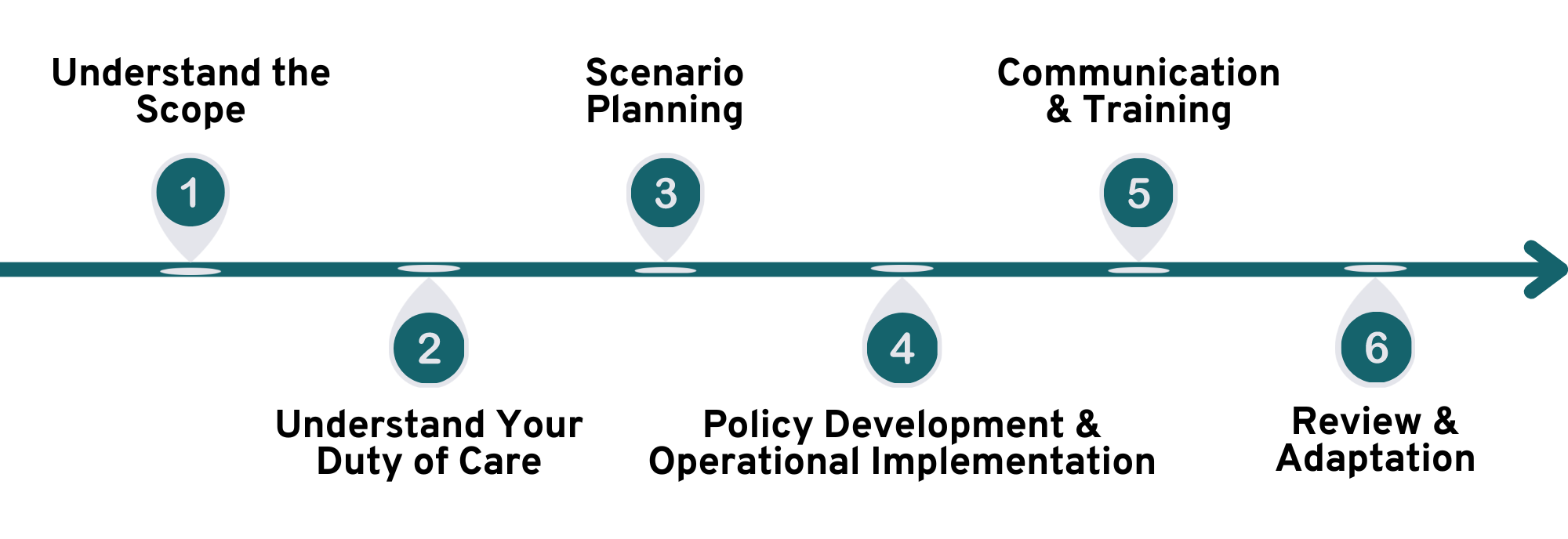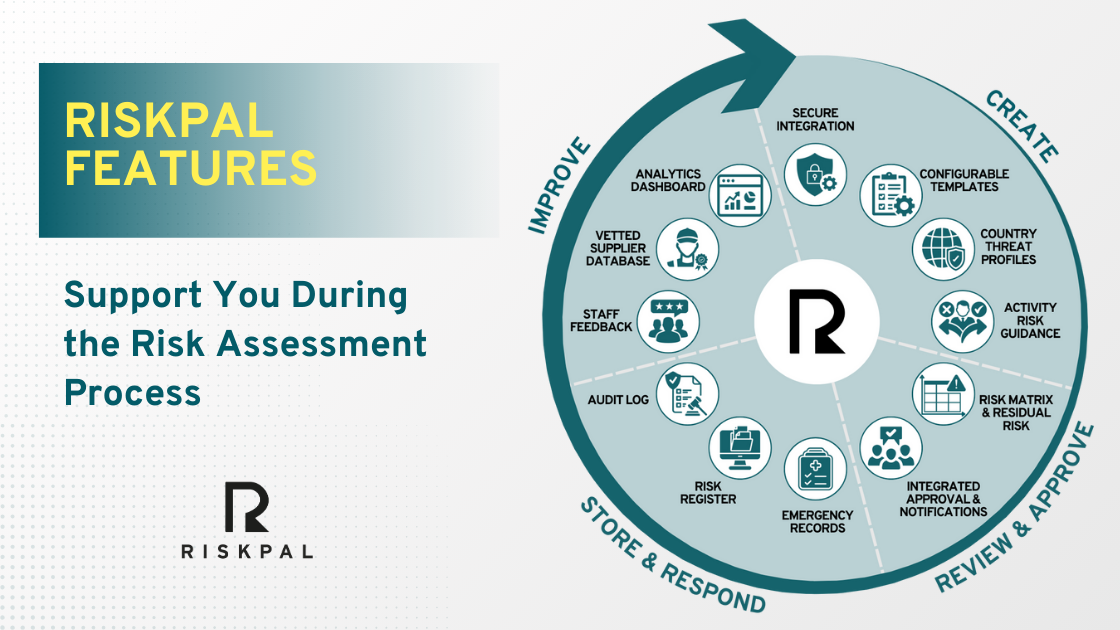How to Safeguard Digital Nomads: Building a Robust Security Management Programme

In recent years, the global workforce has undergone a profound transformation in the way people work, and how organisations hire and manage their staff. Thanks to advances in technology and the growing acceptance of remote work, organisations are no longer limited to hiring talent within their local markets. Instead, they can recruit from a global pool of professionals, all connected through a digital office.
This shift offers workers unprecedented flexibility. No longer tied to a physical office, they can relocate to more affordable and desirable locations or even travel the world, all while continuing to work. Welcome to the age of the digital nomad! From Bali to Buenos Aires, today’s knowledge workers can access the digital office from anywhere in the world and enjoy freedoms previously unimaginable.
This trend is an exciting opportunity, but it comes with challenges and risks. The freedom and autonomy that come with remote work need to be carefully thought through with regards to the safety of individuals and the operational security of the organisation. This is where a comprehensive security management programme becomes essential.
Key Stats on Digital Nomads
- Throughout 2015–2023, the percentage of people working remotely around the world quadrupled, from 7% to 28%.
- 2023 estimates showcase 40 million digital nomads around the world.
- Freelancing is the most common work arrangement for digital nomads, followed by full time employment.
- 80% of surveyed digital nomads report high job satisfaction (compared to 59% non-nomads).
Source: TechReport, 8 July 2024
Understanding the Risk for Digital Nomads
Destinations with beautiful beaches, exceptional cuisine, or a higher quality of life are undeniably appealing. However, it’s important to also consider potential downsides that may accompany these attractions.
- Personal Security Risks: Digital nomads may find themselves in locations that are political unstable, more authoritarian or prone to natural disasters. Additionally, the nature of their work may influence their risk profile, potentially making them more vulnerable in certain environments. Employers need to understand what their responsibility is if a worker is arrested, injured or even killed.
- Information Security Risks: Information security is a critical concern for remote workers who rely on technology to stay connected and productive. Digital nomads who travel the world are more vulnerable to cyberattacks and digital surveillance, increasing the risk of data breaches that could compromise sensitive company information.
- Legal and Compliance Risks: Working across borders introduces legal complexities. Workers may inadvertently violate local laws or work visa requirements. Organisations must consider issues related to visas, work permits, and tax compliance.
- Health and Safety Risks: Remote workers, especially digital nomads, may find themselves in locations with varying standards of healthcare and safety.
How to Keep Digital Nomads Safe
Digital nomads present a unique challenge from a security perspective. Unlike a traditional workforce based in a controllable workspace, digital nomads are isolated and scattered, making a one-size-fits-all approach ineffective. Instead, risks need to be assessed and mitigated on an individual basis.
An added complication from a security standpoint is that digital nomads, often on freelance contracts, frequently collaborate with other organisations and use their own devices to access company information. Therefore, your operational security must adapt to their needs, not the other way around.
So, where should you begin? Here are the key steps to include in your security management programme:


Understand the Scope:
Start with understanding how big the issue really is. How many digital nomads do you have, and where are they located? How frequently do they travel for personal reasons while continuing to work?
Also, consider how your workers are contracted, the amount of time they work for you, and the nature of their tasks and access permissions.

Understand Your Duty of Care:
Get consensus regarding your organisation’s duty of care for all workers, including employees, freelancers, consultants, and volunteers. Consider legal obligations, moral responsibilities and reputational issues.
In short, ask: What level of risk does your C-Suite find acceptable and what do they expect you to do if a digital nomad gets into trouble?

Scenario Planning:
Use real cases to explore what could go wrong and how you would respond. For example, what would happen if your digital nomad were based in or visits a country hostile to your company’s home country?
Consider several scenarios tailored to your organisation to identify common threats. Consult with international workers and experts to understand the threats they may face and how these could impact your organisation.
Scenario planning helps pinpoint vulnerabilities at both the organisational and individual levels, allowing you to prepare for worst-case situations and develop risk mitigation strategies.

Policy Development and Operational Implementation:
This is the crucial stage of building a security management program. After mapping the scope of the problem, setting expectations, and compiling a bank of realistic scenarios, you are now in a position to develop clear policies and safety protocols.
Your policy should not only address the identified risks but also detail how these risks will be managed operationally and the specific workflow required. For instance, if you determine that visits or stays in high cybercrime destinations necessitate restricted access to certain systems for relevant individuals, you’ll first need to identify which parts of the system should be restricted. Following this, you should establish a travel notification process and assign responsibility to someone for implementing these restrictions.

Communication and Training:
All new processes and policies need to be effectively communicated to the business. Provide staff with ongoing training on company policies and processes, as well as information security best practices and personal safety. Regular updates and refresher courses are essential to ensure that staff remain informed and prepared for the risks they may encounter.

Review and Adaptation:
Security risks are constantly evolving, so it’s crucial to regularly review and update your security management programme. Gather feedback from your people and adjust the programme as needed to address new challenges and ensure its effectiveness.
Conclusion
The rise of digital nomads presents both opportunities and challenges for organisations and workers. By implementing a comprehensive security management programme, employers can fulfil their duty of care, protect their staff, and ensure that the benefits of a flexible, modern workforce are realised without compromising safety or security.
At RiskPal, we provide practical guidance on building strong security management programmes that address the unique needs of a global workforce. We also offer expert advice on conducting risk assessments for staff in or travelling to high-risk remote locations worldwide. Learn more at RiskPal.com, or contact us for assistance with your risk management programme.



